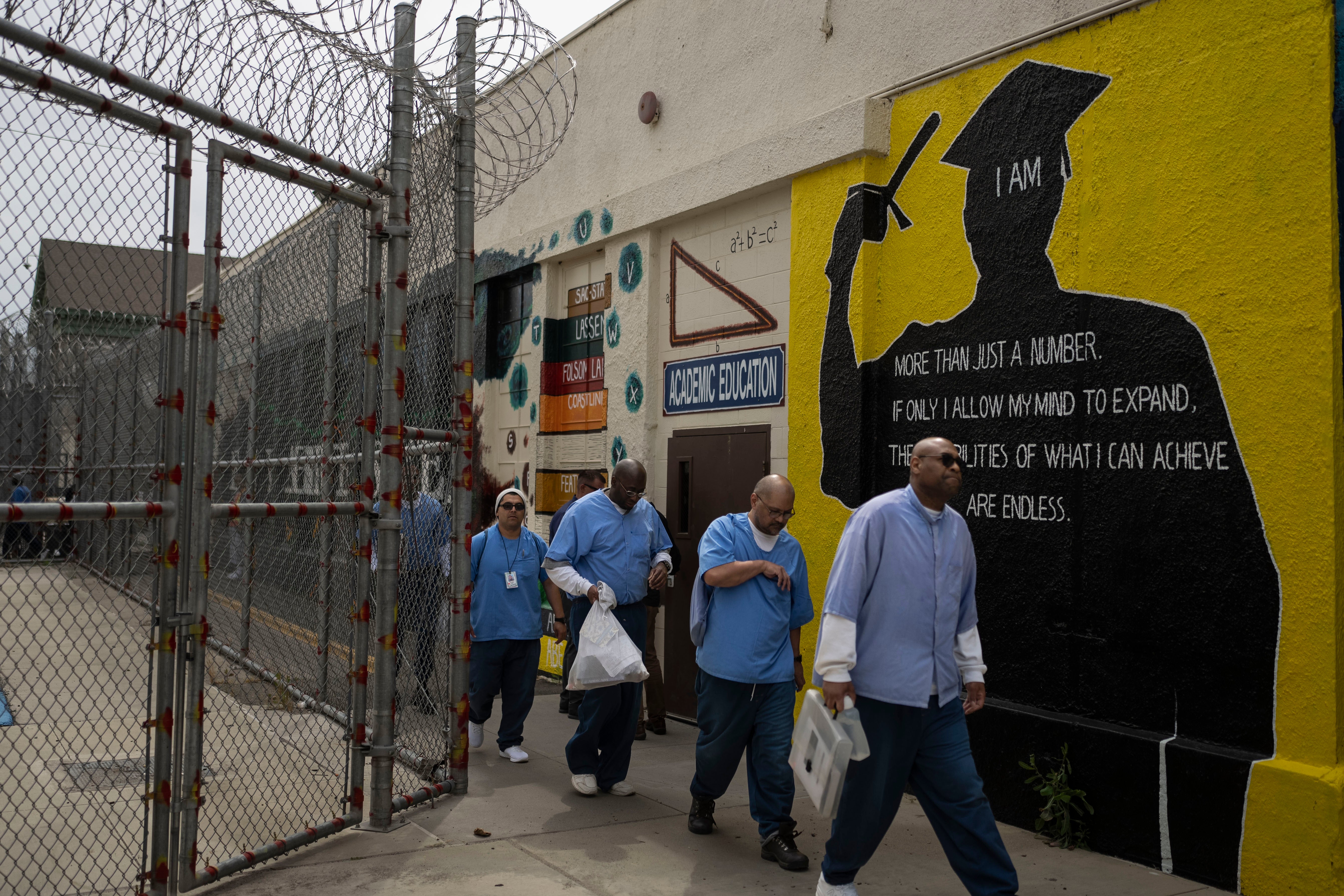5 takeaways from AP's reporting on Pell Grants for prisoners getting college degrees
Thousands of prisoners throughout the United States get their college degrees behind bars, most of them paid for by the federal Pell Grant program, which offers the neediest undergraduates tuition aid that they don’t have to repay

Your support helps us to tell the story
From reproductive rights to climate change to Big Tech, The Independent is on the ground when the story is developing. Whether it's investigating the financials of Elon Musk's pro-Trump PAC or producing our latest documentary, 'The A Word', which shines a light on the American women fighting for reproductive rights, we know how important it is to parse out the facts from the messaging.
At such a critical moment in US history, we need reporters on the ground. Your donation allows us to keep sending journalists to speak to both sides of the story.
The Independent is trusted by Americans across the entire political spectrum. And unlike many other quality news outlets, we choose not to lock Americans out of our reporting and analysis with paywalls. We believe quality journalism should be available to everyone, paid for by those who can afford it.
Your support makes all the difference.The Associated Press visited a California prison for a graduation ceremony last month, as dozens of prisoners received college degrees, high school diplomas and vocational certificates earned while they served time.
Thousands of prisoners throughout the United States get their college degrees behind bars, most of them paid for by the federal Pell Grant program, which offers the neediest undergraduates tuition aid that they don’t have to repay. That program is about to expand exponentially next month, giving tens of thousands more students behind bars financial aid per year.
Here are the key takeaways from the AP's reporting:
HOW DO COLLEGE PROGRAMS BEHIND BARS HELP PRISONS OVERALL?
Studies have shown that taking any kind of courses while behind bars results in a 43% less likelihood that a former prisoner will commit more crime and return to prison. Advocates also say college and other rehabilitative programming improve safety in the prisons for staff and the incarcerated population, reducing the number of violent incidents.
HOW MUCH DOES IT COST TO EDUCATE PRISONERS WITH PELL GRANTS?
Under the Free Application for Federal Student Aid (FAFSA) Simplification Act, more than 760,000 people in prison will become eligible for Pell Grants once the law is implemented on July 1. The U.S. Department of Education said the expanded Pell Grant eligibility for incarcerated students will result in approximately 30,000 additional grant recipients receiving approximately $130 million in financial aid per year.
During the 2021-2022 academic year, the government spent over $26 billion total on Pell Grants – and the prisoner grants would amount to less than a 1% increase.
Consider this: It costs roughly $106,000 per year to incarcerate one adult in California. The cost of educating one prisoner with a bachelor’s degree program through Transforming Outcomes Project at Sacramento State, a college program partnered with Folsom State Prison, is about $20,000.
If a prisoner paroles with a college degree, never reoffends, gets a job earning a good salary and pays taxes for 20 years, it's a clear return on investment. Every dollar spent in prison-based education yields more than four dollars in taxpayer savings from reduced incarceration costs, studies have found.
HAS THE PELL GRANT ALWAYS BEEN AVAILABLE FOR PRISONERS?
The Violent Crime Control and Law Enforcement Act of 1994 amended the Higher Education Act of 1965 to ban Pell Grants and other financial aid to people incarcerated in federal or state prison. Although less than 1% of all Pell funds went to incarcerated students, the ban caused the hundreds of college-in-prison programs that existed in the 1970s and 1980s to go almost entirely extinct by the late nineties.
Congress voted to lift the ban in 2020, and since then about 130 experimental programs have been running, like the one at Folsom. Now, the floodgates will open, and more than 200 colleges have been invited to provide Pell-eligible prison education programs in 48 states, Washington D.C. and Puerto Rico.
IS THERE RACIAL EQUALITY IN PRISONERS' ACCESS TO COLLEGE PROGRAMS?
Racial imbalances in prison college enrollment and completion rates are a growing concern for advocates. People of color make up a disproportionate segment of the U.S. prison population. Yet white students were enrolled in college programs at a percentage higher than their portion of the overall prison population, according to a six-year Vera Institute of Justice study of Pell Grant experimental programs in prison.
Black and Hispanic students were enrolled by eight and 15 percentage points below their prison population, respectively.
Prisoners with a record of good behavior get preference for the rehabilitative and prison college programs. Black and Hispanic prisoners are more likely to face discipline.
WHY DOES IT MATTER IF A FORMERLY INCARCERATED PERSON HAS A DEGREE?
For prisoners who get their college degrees, it can be the difference between walking free with a life ahead and ending up back behind bars. Finding a job is difficult with a criminal conviction, and a college degree is an advantage former prisoners desperately need.
Advocates say prisoners are increasingly walking out of prison and into job opportunities, in part, because of collaborations between corrections departments, universities and employers looking for the skills taught inside of prisons.
___
Aaron Morrison is a New York-based member of the AP's Race and Ethnicity team. Follow him on Twitter: https://www.twitter.com/aaronlmorrison.